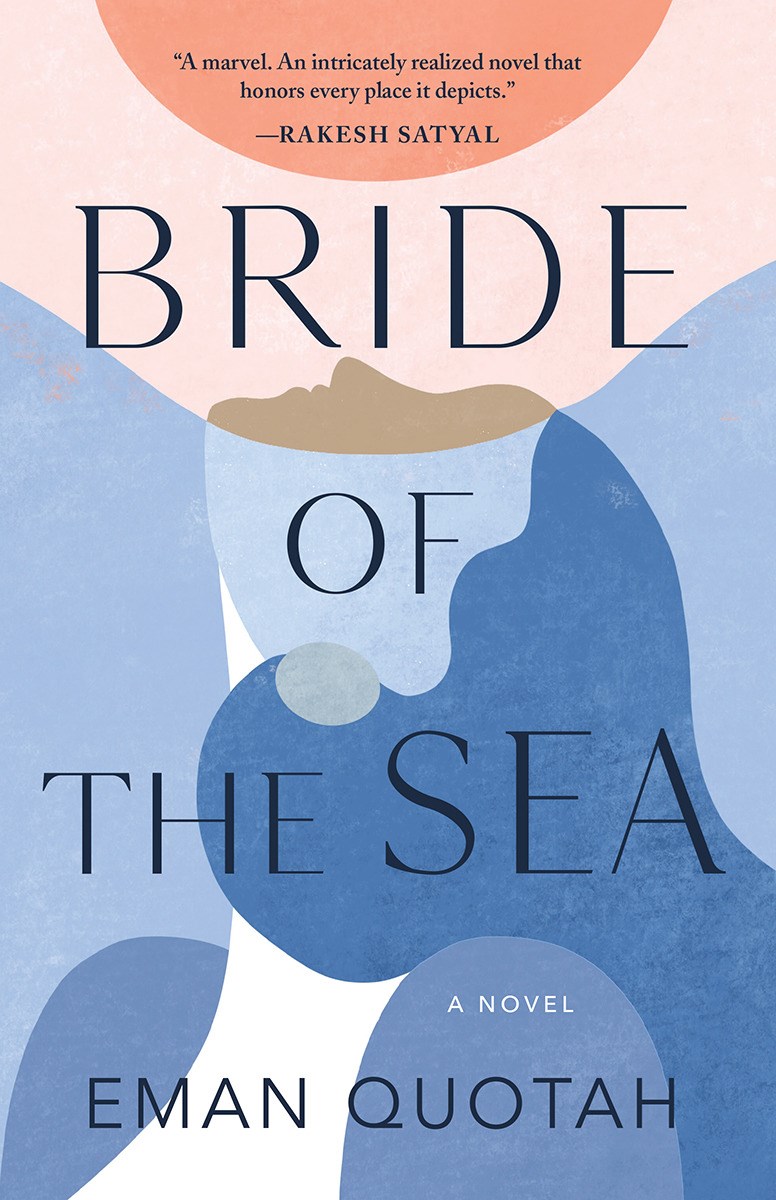[ad_1]
One of fiction’s greatest possibilities is how it can exist as something both intimate and grand, simultaneously exploring the life of a character and the world they are growing into, until one narrative unfolds into many. Bride of the Sea does just this, as the novel intertwines the dissolution and reconstruction of a single family with the evolving histories of the United States and Saudi Arabia. Eman Quotah deftly spans decades, miles, and cultures—and ultimately tells more stories within her 312 page debut than some authors tell across their entire careers.
Bride of the Sea begins at the end of a marriage between Muneer and Saeedah, who are living in Cleveland for school and expecting their first child. When Muneer returns to Saudi Arabia and his ex-wife stays in the United States, Saeedah makes the fateful decision to disappear across the United States with their daughter, Hanadi, for fear that she may lose her. From here, the novel splinters and roves between the three characters, as Muneer spends years travelling between the two countries searching for his daughter, Saeedah settles into a life of constant movement and alternate identities, and Hanadi matures and begins to reckon with the trauma caused by her mother’s actions.
While the perspective switches between these three characters, Hanadi serves as the emotional linchpin of the novel. After she reunites with her father and separates from her mother, readers follow her as she acclimates to an unfamiliar culture during trips to Saudi Arabia, meets an extended family that her mother has kept her from, and struggles to construct her identity between parents, countries, and international conflicts—from the Gulf War to the aftermath of 9/11.
The story comes alive in its descriptions, as every page welcomes readers with the sights, scents, and smells of a setting steeped in love and care. Quotah also uses the sensory to enhance every aspect of the novel, from characterization to the plot’s most climatic moments, heightening passages such as “the candied almonds had sweetened the girls’ breaths” and “Faziah’s eyes were hard as date pits” into not only evocative images, but also important pieces of information. But her skills are best on display when she is writing about Jidda, the home city of Muneer and Saeedah. The following passage alone carries the weight of an entire family in its words:
“This place—this bride of the Red Sea, as her father calls the city—is the origin of her mother’s phonemes. The blue sky like a vat of dye, the air like steam in a bathroom, the promise of sea to the west and carpets of sand to the east, somewhere over there past the city limits. These things gave birth to her mother’s p’s that are not quite p’s, her v’s that bear passing resemblance to f’s, her insistence on opening lights rather than turning them on.”
As Quotah moves through an extensive period between 1970 and 2018, it’s the narrative spaces, not her scenes, that truly accentuate her strengths as a writer. In each jump in time, readers can see how each character’s life has changed and blossomed—Saeedah finds religion and a new life in America, Muneer settles into the relationship with his daughter he longed for, and Hanadi marries, has a child, and establishes her career path. Each chapter is an expression of growth, every moment of silence its own story. In its most shining moments, Bride of the Sea displays the breadth and scope of grand family epics such as Min Jin Lee’s Pachinko, as we see a family move in rhythm with a larger history.
Quotah’s writing is beautiful, moving, and well-crafted, but the novel refuses to be tied up perfectly upon completion. Instead, the novel mirrors the messiness of life. Readers are presented with instances of detainment and profiling without justice, unhealed heartbreak, and reunions that can’t fully erase past harm. This is ultimately a story about one family and two nations growing apart and together, forever bound to one another. There can be no simple resolution. And that’s the point. Instead of happy endings, Quotah offers us insight, as she writes “the memories are painful. Writing this is painful. But the memories and the pain are mine. The story is mine.”

FICTION
Bride of the Sea
By Eman Quotah
Tin House Books
Published January 26, 2021

[ad_2]
Source link
